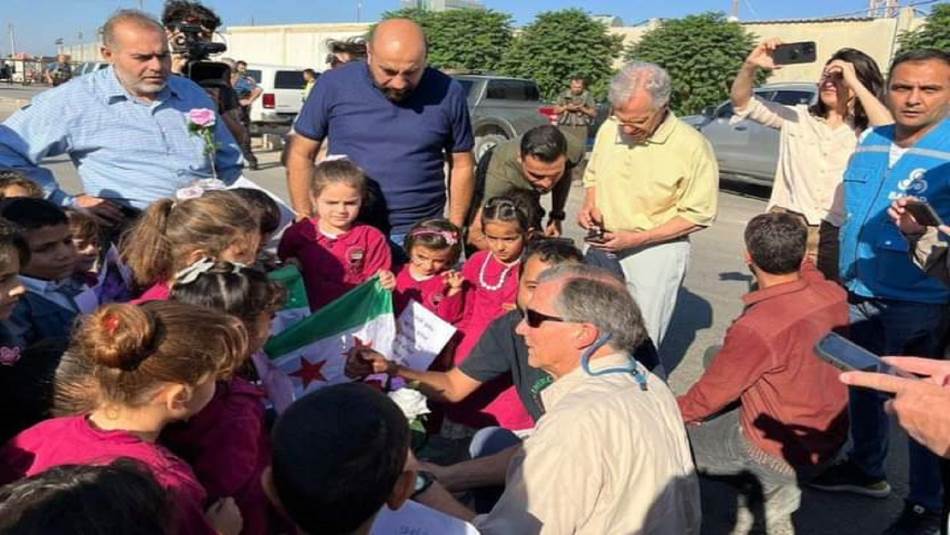The ongoing events in the Suweida Province cannot be dismissed as mere protests against economic and living conditions. Such a perspective would, at best, stem from misunderstanding, short-sightedness, a lack of foresight, and inadequate information. The reality is that the happenings in Suweida reflect a long-deferred aspiration of its people to shape the destiny of this crucial and sensitive region. There are multifaceted reasons underlying this movement, including eradicating corruption, ending state-sanctioned violence, curbing the influence of paramilitary groups (shabiha), and countering drug trafficking facilitated by the city’s strategic location. Additionally, there’s a prevailing sentiment among the people of Suweida that the regime’s downfall is imminent.
This movement transcends sectarian boundaries, encompassing not only the Druze population, which forms the majority, but also Christians, residents of various faiths, and tribal Muslims. They unite under shared demands: the implementation of Security Council Resolution 2254, the departure of the regime, the release of detainees, and the liberation of Syria from external influences. These demands echo the aspirations of Syrians nationwide and remain core tenets of the revolution. At a time when the regime seemed unassailable, the resurgence of this movement defies the narrative of its invincibility and the perceived failure of the revolution. It reinstates the revolutionary spirit and the call for regime change at a pivotal juncture.
Second Week Starts: Demonstrations in Suweida as Southern Tribes Join
Critics sometimes denigrate the Syrian Druze for their perceived lack of involvement in the revolution, alleging their support for or at least acquiescence to the regime. Yet, this viewpoint oversimplifies the complexities at play and disregards historical nuances. Suweida indeed played a role in the early stages of the revolution, exemplified by the actions of “Rijal al-Karama” and the late Sheikh Walid al-Balous, who paid with his life for his opposition to the regime. However, the rise of extremist elements that distorted the revolution’s image and principles led to a retreat by those who sought to protect their movement from extremism and terrorism.
With the retreat of extremist organizations from the southern region, the Syrian landscape is reshaping. Suweida rekindles its long-delayed aspirations, bolstered by public discontent and the support of its traditional religious leaders. These leaders hold a firm conviction that the Assad regime is ineffectual, perpetuating the same mismanagement, oppression, and dependence on illusionary power.
The significance of Suweida’s movement extends beyond being just another city joining the ranks of the revolution or opposing the regime. This governorate boasts unique attributes, from its predominantly Druze population to its strategic location bordering Jordan. It wields influence within the internal, regional, and international contexts, impacting broader field arrangements.
Situated at the heart of the Syrian upheaval, Suweida’s border with Jordan makes it a crucial gateway for the regime and Iranian militias’ Captagon trafficking into the Gulf region. Its loss would strip the regime of a pivotal economic and political leverage point against Gulf states. Suweida neighbours Daraa, the revolution’s birthplace and a core opposition stronghold. Its eastern expanse extends to the Al-Sham desert, reaching the Iraqi-Jordanian border and the Al-Tanf base—a hub of significant developments under U.S. leadership.
Given its strategic location, Suweida’s movement directly influences the surrounding events. It can serve as a barrier against Iranian militias and drug smuggling. The regime is wary that violent suppression of the movement would carry hefty costs and draw international scrutiny.
Caught in a conundrum, the regime attempts to downplay the movement by associating it with Druze secessionist motives. This manipulative approach seeks to portray the movement as a minority rebellion aiming to fragment Syria. However, this narrative contradicts the movement’s overarching patriotic goals. Regime-affiliated elements and shabiha propagate this distortion, justifying violence as a means to prevent supposed partition.
The regime’s potential strategies include resorting to terrorism against the movement. This could involve either fueling extremism among the population or falsely claiming ISIS infiltration to justify repressive actions. To counter these potential tactics, coordination between the Suweida movement, other rebel strongholds, and their leaders is imperative. Transforming the movement into a formidable political force amid a delicate and precarious context is paramount.
This article was translated and edited by The Syrian Observer. The Syrian Observer has not verified the content of this story. Responsibility for the information and views set out in this article lies entirely with the author.


